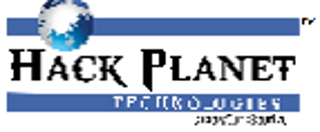Remove Unremovable Desktop icons
Do you like this story?
To create your own customized XP interface, you need to be able to remove certain desktop icons. A Registry hack lets you remove any you want, including those apparently protected by XP.
Creating the perfect, customized XP interface doesn't only mean changing icons; it also means removing them. For example, many power users look down their nose at America Online, and yet, on many systems, that icon can't be removed easily.
America Online isn't the only icon protected this way; many others are as well. Which desktop icons are protected on your system will depend on your exact version of XP (for example, SP-1) and the manufacturer of your PC. The Recycle Bin is protected on all versions, but the America Online icon is protected on some systems, and not on others.
To customize XP to your liking, you'll want to be able to delete these protected icons. To do so, you'll need a Registry hack. Run the Registry Editor and go to
HKEY_LOCAL_MACHINE\SOFTWARE\Microsoft\Windows\CurrentVersion\Explorer\Desktop\NameSpace.
Here's where you'll find various special desktop icons. They're not listed by name, but instead by CLSID—for example, {645FF040-5081-101B-9F08-00AA002F954E} for the Recycle Bin. Table 2-3 lists CLSIDs of common desktop objects, so use it to find the CLSID of the icon you want to delete.
To remove an icon from the desktop, simply delete the key of the icon—for example, {645FF040-5081-101B-9F08-00AA002F954E} for the Recycle Bin. Then exit the Registry, go to your Desktop, and press F5 to refresh the screen. The Recycle Bin icon should now be gone.
On some systems, the icons may not be deleted immediately. Instead, after making the Registry change, you might have to right-click on the icon and choose Delete.
Some CLSIDs in HKEY_LOCAL_MACHINE\SOFTWARE\Microsoft\Windows\CurrentVersion\Explorer\Desktop\NameSpace
can be deleted from the desktop without having to go through this procedure, but when you try to delete them they may give you a special warning message. For example, when you try to delete Microsoft Outlook from the Desktop, you get the warning message "The Outlook Desktop icon provides special functionality and we recommend that you do not remove it."
If you'd like, you can edit that message to display whatever you want. In the CLSID's subkey—for example, {00020D75-0000-0000-C000-000000000046} for Microsoft Outlook—you'll find the value Removal Message. Edit this value to whatever text you want, and your warning message will appear whenever someone tries to delete the icon.
Keep in mind that when you remove desktop icons you're removing only icons, not the underlying feature or program. So, the Recycle Bin still works even if you remove its icon. To open the Recycle Bin, go to C:\RECYCLER and open the folder inside it. To restore an item that's been deleted, right-click on it and choose Properties Restore. Delete items as you would any other item.
Hack 12 Rename and Change "Unchangeable" Desktop Icons and System Objects
To create the perfect XP interface, you want to be able to give every desktop icon and system object the name and icon of your choice. Here's how to do it—even to objects that appear to be unchangeable. Interface hackers (myself included) are a details-oriented bunch. We want to be able to control every part of the interface so that it reflects our personality. That means being able to choose our own icons for desktop items and system objects, give new names to system objects, and create our own balloon tips—for example, adding a balloon tip to the Recycle Bin saying "Take Out the Trash!" But it's not as simple as you might think. Microsoft has a way of protecting its own. For example, it won't let you change the text and balloon tips associated with a variety of system objects, such as the Recycle Bin, Outlook, Internet Explorer, My Computer, and My Network Places. You can normally change both the name and the balloon text (text that appears when you hover your mouse over the icon) of all the icons on your desktop, but you can't change these. Normally, to change the name and balloon text of an icon, you first right-click on the icon and choose Properties. To change the name of the icon, you choose the General tab and, in the box at the top, type in the name that you want to appear beneath the icon. Then, to change the balloon text, you click on the Shortcut tab and in the Comment box type in the text that you want to appear. When you're ready to make the change, click OK. The icon name and balloon text should now be changed. But when you try to do this for system objects such as Outlook, Internet Explorer, My Computer, and Network Neighborhood, it won't work. The proper options don't appear when you right-click on them and choose Properties. There are ways, however, to change them in any way that you want, so that you can create your own personalized XP interface. 2.6.1 The Registry to the RescueThe Registry is your best tool for personalizing XP. It will let you change both the text and balloon tip associated with system objects. First, you need to know the object's class ID (CLSID), which uniquely identifies each system object. Table 2-3 lists the CLSIDs for common desktop objects.
|




0 Responses to “Remove Unremovable Desktop icons”
Post a Comment